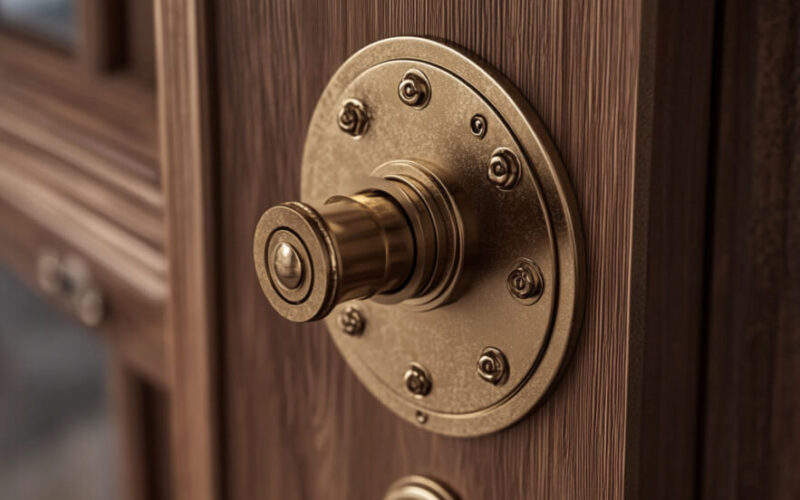When faced with a locked door and lost keys, a person realises how important a good lock is. But even the most reliable mechanisms are not absolutely secure. Understanding the principles of their operation and methods of opening is necessary not only for intruders, but also for professional locksmiths to promptly help customers in emergency situations.
A breakdown of the key principles of locking mechanisms
Each lock is based on the same principle – a mechanism that blocks the movement of the locking element (suvalds, pins, discs or bolts). When the correct key is used, the elements become in the correct position, allowing the cylinder to be turned and the door to be opened. The main types of locking mechanisms:
- Cylinder locks – operate on a system of pins of different lengths.
- Suvald locks – use plates (suvalds) which are lined up in a row.
- Disc locks – have rotating discs that require an exact match.
- Electronic and smart locks – open with codes, cards or fingerprints.
Understanding the design allows you to identify the vulnerable points of each type, which is important for the work of a professional locksmith.
Which locks are the fastest to break into?
Some locks can be opened almost effortlessly if they are made of cheap materials or have an outdated design. The fastest to break into:
- Cylinder mechanisms without protection against bumping and lock picks. Many older models can be easily opened by percussion.
- Locks with plastic or aluminium parts. They are susceptible to mechanical failure.
- Simple padlocks. They can be bitten off with a bolt cutter.
- Electronic locks without backup power. If the battery is dead, opening is simplified.
Professionals know that security fittings and additional mechanisms make tampering much more difficult.
Modern autopsy tools: what do professionals use?
The locksmith always acts according to the law and uses tools that minimise damage to the mechanism. For cylinder locks, lock picks and tension keys are used to carefully manipulate the pins. Special bump keys work on the percussion principle, forcing the mechanism to spontaneously spring into position. Hydraulic wedges and expanders are used to open locked doors, especially if the mechanism is jammed.
If it is necessary to pick up the key without damage, electronic decoders capable of reading information from the lock are used. For complex suvald mechanisms manipulators are used, which allow to move plates without drilling. Tool selection depends on the type of lock and complexity of its construction.
The difference between a legal break-in and a criminal break-in
The main difference is the owner’s permission. A professional locksmith opens a lock only with the official consent of the owner or by court order. His task is to minimise damage and keep the lock operational.
Criminal break-in, on the contrary, is aimed at quick and silent penetration. Criminals use barbaric methods: drilling, destroying the cylinder, tearing out the core. They do not care about the safety of property.
To understand the methods of opening is useful not only for a locksmith, but also for any homeowner to understand what weaknesses their door mechanisms have.
In which cases can the lock not be opened without damage?
Sometimes damage cannot be avoided, and the locksmith will warn the customer of this in advance. Opening with destruction is required if:
- The bolt is jammed or the lock case is deformed.
- There was a breakage of a part inside the mechanism.
- There was an unsuccessful burglary attempt. Damaged mechanisms are more difficult to open using standard methods.
- The key has broken inside the lock.
In such cases, the mechanic has to be cut, drilled or broken out and replaced after opening.
Myths about secure locks: truth or marketing?
Many property owners believe that buying an expensive lock solves all security problems. However, the reality is that even the most reliable mechanisms have weak points. One common myth is that the more suvalds, the better. In fact, if the lock design does not have additional protection against manipulative tampering, even a large number of suvalds does not guarantee security. Qualified specialists can open such mechanisms with the help of special manipulators.
Another myth is related to electronic locks. Many people believe that they are unbreakable, but in reality they are vulnerable to hacker attacks, code-grabbers and signal substitution. Moreover, they lose functionality when the battery runs out or software malfunctions. Some attackers use the electromagnetic pulse method to temporarily disable the protection.
There is a belief that the more expensive the lock, the more difficult it is to open. However, cost is not always an indicator of protection. Some premium models have serious disadvantages, such as poor resistance to mechanical impact. Some branded cylinder mechanisms without armour plates are easily drilled out, despite the marketing claims of the manufacturers.
Another misconception concerns locks with secret keys of complex shape. While non-standard keys do make them harder to copy, the locks themselves can be vulnerable to picklocks or bumping methods. And some exclusive keys that manufacturers advertise as ‘impossible to copy’ are actually duplicable using 3D printing.
It is important to understand that the reliability of a lock is not only its price or the complexity of the mechanism, but also additional protective elements: armor plates, protection against drilling, multi-layer bolts and quality installation. The choice of a lock should be informed and based not only on advertising, but also on real data about its resistance to various methods of tampering. Also check out our article “Taking a loan without rejection: a way out of lock and door stalemates” for more security tips.
FAQ
Check whether there is protection against bumping and lock picks and the quality of the cylinder mechanism
If there is a broken part inside the mechanism or the lock has been subjected to a brutal burglary attempt, it cannot be opened using standard methods.
Models with anti-drill protection, armour plates and complex locking mechanisms, e.g. Mul-T-Lock, Mottura, Abloy.

